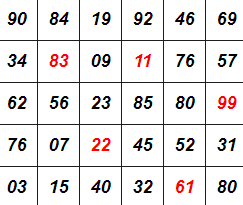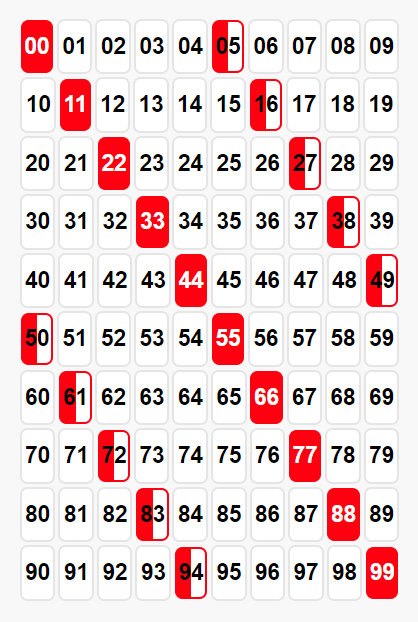Satta Matka
Learn Matka : The Basics of Satta Matka
Terminology
There are few terms that you need to get familiar with before we move forward. All terms will be explained in detail as we move forward.
Market
Bookmaker
Player
Rate
Result
Open
Close
Record Chart
Reading Results
Understanding Display Notations & Learning to Read Results
It is recommended that you know how to read/understand results even before knowing the core concepts.
Example of Open Result : 135 - 9
Example of Close Result : 389 - 0
135 - 90 - 389
to form "Full Result"Example of Close Result : 389 - 0

135 - 90 - 389
( This is the format mostly seen on all live result websites )
135 is Open Pana,
9 is Open Single,
0 is Close Single,
389 is Close Pana,
90 is Jodi,
135 - 0 is Half Sangam A,
389 - 9 is Half Sangam B,
135 - 389 is Sangam

Meaning that, its one of these :00,05,11,16,22,27,33,38,44,49,50,55,61,66,72,77,83,88,94,99
Reds are explained as you read further into this page.
Variations
SINGLE 1 Digit
JODI 2 Digits
PANA 3 Digits
HALF SANGAM 5 Digits
SANGAM 6 Digits
Single (ANK)
Note: In matka, 0 is considered greater than 9.
Singles Rate : 1:9
Cut Numbers
2 & 7
3 & 8
4 & 9
5 & 0
JODI
LIST OF 100 JODI

Red Jodi's
If you see a matka chart, you will come across some results marked in red color. Those are reds.
What is a Red Jodi?
A Red Jodi is a Jodi in which both singles belong to same cut set.
Pana (Patti)
Note : All triple digit numbers are not pana's. There are 1000 triple digit numbers but only 220 of them are called Pana's.
Pana's are always in increasing format (ascending order) 123 is pana but 231 / 132 / 213 / 312 are not pana's. Out of 1000 possible triple digit numbers, if you arrange them in ascending order, you get only 220 unique numbers. Hence 220 Pana's.
For example, numbers 123, 132, 213, 231, 312, 321, when arranged in ascending order, produce same number ie. 123.
Each Pana is permanently attributed to its Single based on the sum of its three digits.
How to know which Single a Pana belongs to?
+ Sum the three digits of Pana
? If sum of the three digits of a pana is less than 10, the exact sum is considered as its single.
Ex. 153 ( 1+5+3 ) = 0{9}
The last digit of total is its single
In this case, 153 belongs to Single 9.
Ex. 124 ( 1+2+4 ) = 0{7}
In this case, 124 belongs to Single 7.
? If the sum of three digits of a Pana is more than 9, the last digit of the sum is considered its Single.
Ex. 939 ( 9+3+9 ) = 2{1}
In this case, 939 belongs to Single 1.
Classification of Pana's
Single Pana (SP Pana)
Double Pana (DP Pana)
Triple Pana (TP Pana)
12 are Single Pana's
9 are Double Pana's
1 is Triple Pana
SINGLE PANA(SP PANA)
There are 120 Single Pana's
For example, 123 is Single Pana and 224 is Double Pana
Format : X<Y<Z
SP Pana Rate : 1:140
DOUBLE PANA(DP PANA)
There are 90 Double Pana's
For example, 224 is Double Pana and 123 is Single Pana
Format : X=Y<Z or X<Y=Z
DP Pana Rate : 1:280
TRIPLE PANA (TP PANA)
There are 10 Triple Pana's
For example, 333 is Triple Pana
Format : X=Y=Z
TP Pana Rate : 1:600
Half Sangam
There are 4400 Half Sangams
There are two types of Half Sangams :
Example: In result ( 123-67-124 )
Half Sangam A (HSA)
Ex. In result 123-67-124,
123x7 is Half Sangam A
Half Sangam B (HSB)
Ex. In result 123-67-124,
6x124 is Half Sangam B
Sangam
There are 48400 Sangams.
Both Open Pana and Close Pana should pass in Combination to get a Sangam payout.
Ex: In result 123-(45)-678, 123-678 is the Sangam.